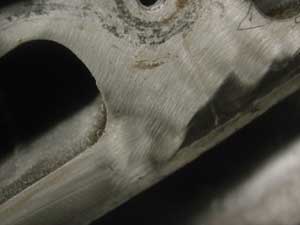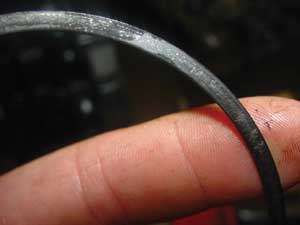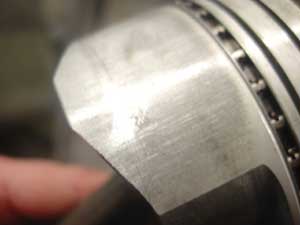By Roy Berndt
Nearly everything can have value; it just depends upon how it is used. For instance, “rat poison” will certainly get rid of unsightly rodents and is usually fatal to humans. Except, of course, when it’s used in the correct dosage. As a blood thinner for those with heart disease, it becomes a life-saving medication.
Well there is a “rat poison” for engines that is used regularly and daily in nearly any installation shop and by DIYers. SURFACE CONDITIONING DISCS, often referred to as cookies within the shop environment, were originally designed for use in the auto body shop, I believe.

Here is where the problem lies when using them to clean engine gasket surfaces, or for cleaning engine parts which are to be reused. If the intent is to have a surface that is perfectly clean and ready for the gasket to be applied, surface conditioning discs can do that quickly and give the APPEARANCE of a perfect surface. That is the up-side of these products – at least in the eye of the technician.
Surface conditioning discs are typically woven fiber pads that can be purchased in various degrees of abrasive grades somewhat similar to sand paper. They contain various different abrasives within their woven fibers, the most aggressive being Aluminum Oxide. As these discs are used on surfaces they break down and release large amounts of aluminum oxide along with the metal particles that are being removed from the base metal and results in a brushed look to it (Figure 1).
The aluminum oxide along with the micro particles removed from the base metal are two of the most potentially damaging components that could be introduced into an engine. These particles ingested into an internal combustion engine, be it through the induction system or contamination of the lubricating oil system, will certainly cause a premature engine failure.

When introduced through the induction system, whether through the intake manifold or cylinder head ports, these particles will cause piston ring damage (Figure 2), premature cylinder and piston wear (Figure 3) as well as high oil consumption. The engine in these two illustrations had 100 miles of operation after being contaminated. This is how fast the damage can occur!
When these same contaminants are introduced into the lubricating oil system the damage is horrific and immediate. Imagine adding lapping compound into your engine’s oiling system: you can expect an abrupt failure in very short order. Aluminum oxide and base metal particles actually make a pretty good lapping compound. Both the journal surfaces of the rod and main bearing journals already exhibit extreme wear as well as the thrust flange of the crankshaft.
Other components that would be affected by these types of contaminants include camshaft bearing surfaces and cam lobes, lifters and lifter bores as well as timing chains and gears. In fact, any component that is contacted by the engines lubricating oil and rotates or moves will experience accelerated wear.

Is it impossible to use a surface refinishing disc and not cause engine damage? No. However the extent of cleaning that needs to be done is staggering. Cleaning with solutions, preferably high pressure vacuuming and flushing of all areas that have had any contact of any of the aluminum oxide dust, base metal or removed gasket materials is required, needs to be extensive, and is frankly not worth the chance of contamination.
This all brings us back to using gasket scrapers, razor blades, plastic knives and gasket removing liquids/sprays to remove and clean gasket surfaces without the use of discs. The important issue here is a clean gasket surface and how it feels not how it looks. If it is clean and the surface feels clean and obstruction free, then there should be no issue with a gasket being able to seal.
The last item that we need to discuss about refinishing discs is the damage that you can do to the surface itself. A fresh surface refinishing disc can remove as much as .008˝ in just 15 seconds. That amount of material removed will invariably do more damage to the gasket’s ability to seal than help it.
Bottom line, surface finishing discs are a wonderful tool in many walks of life and are truly a miracle tool in the body and fender repair world. However, when it comes to engines, whether a used engine, newly remanufactured engine or even an engine repair, they can be the kiss of death. Unless you have the means and resource to effectively clean all the contamination from surface refinishing discs you would be best to stay away from these tools. This contamination is easily identifiable by oil sampling of the engine and is a just cause to deny warranty.
In closing, don’t think you’ll be the exception and do a good job with them: there is not a single auto manufacturer that approves of surface refinishing discs. Whether domestic or foreign nameplate, no one approves the use of these tools for the engine. Many OE manufacturers even have caution bulletins to specifically not use this product on anything that has to do with the engine or parts that bolt to an engine.
So if you are looking to the best job possible when it comes to engines, think twice about using surface finishing discs. You’ll avoid the potential damage and denied warranty by an engine remanufacturer, be it aftermarket or OE. If evidence is found of their use your warranty will be null and void.
Article courtesy ENGINE BUILDER.













